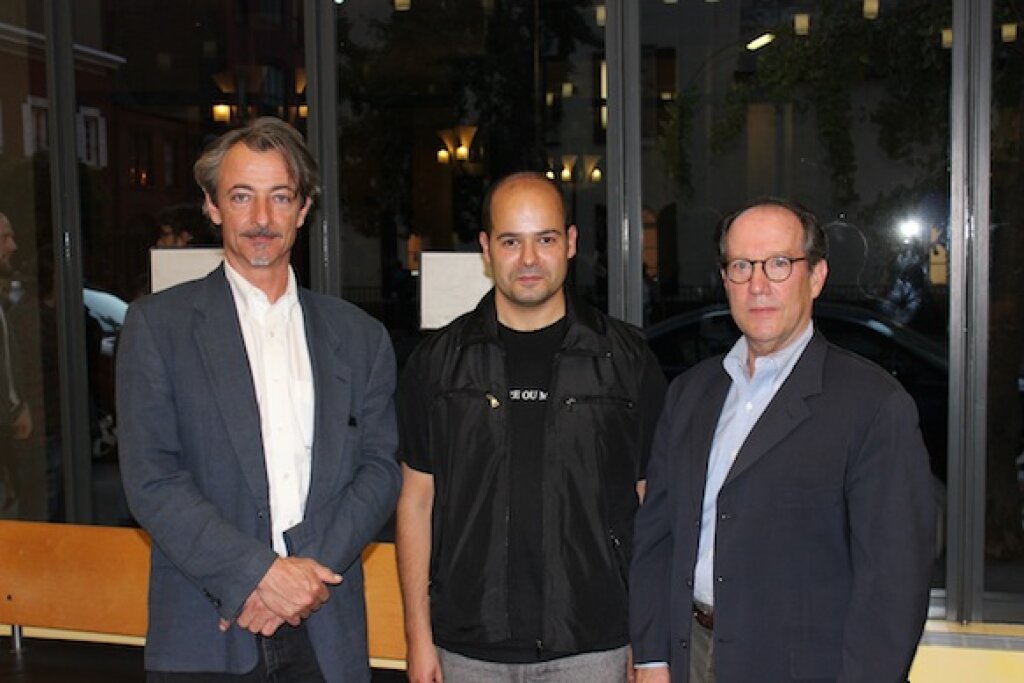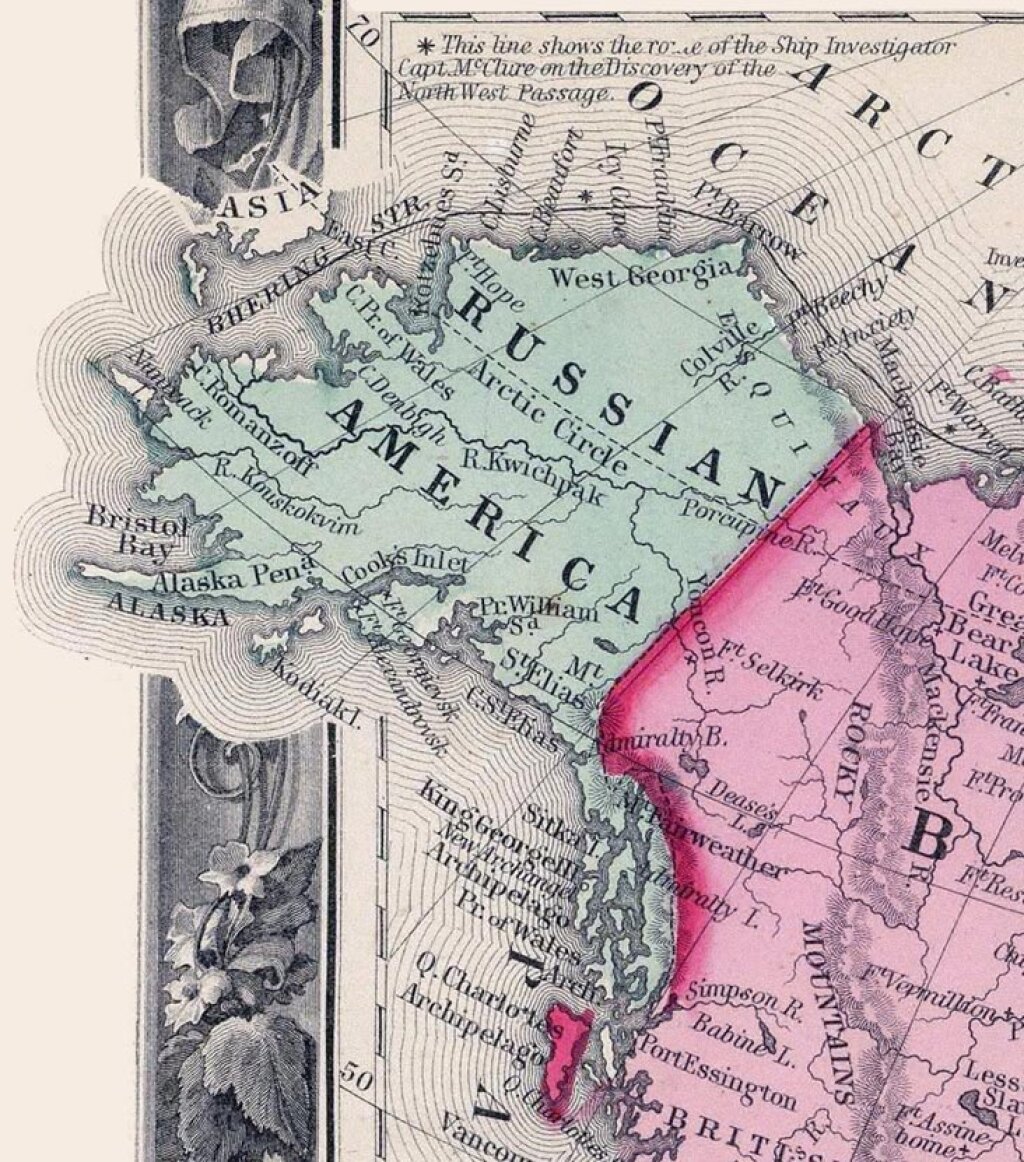On Saturday, April 13, day two of the conference “Hegel to Russia and Back,” sponsored by the Humanities Initiative, CUNY and the Jordan Center, took place at NYU. Again brilliant minds met to discuss Hegel’s encounter with and influence on Russia.
Panel one, “Soviet Hegel,” included Yanni Kotsonis (NYU), Vesa Oittinen (University of Helsinki), and David Bakhurst (Queens University), with Petre Petrov (Princeton University) as discussant.
Yanni Kotsonis outlined some of the mechanisms involved in the Soviet state project. While to Hegel the state was seen as a destination in itself, in the search of freedom, the Soviet state ended up being led through coercion and experts who initiated projects from the top. Although emphasizing that the dynamics of the Soviet state does not differ greatly from those found in other countries throughout history, Kotsonis also investigated the special bond between the state and economy which could be found in the Soviet Union. The Soviet state voted for transformation through power, and not power through transformation. The state therefore ended up being something far different from what one can trace in Hegel’s philosophy.
Vesa Oittinen gave an interesting presentation on Mikhail Lifshits, and offered some theories on why Lifshits is so little known compared to his friend Georg Lukacs. A strong opponent of modernism and formalism, yet at the same time a critic of Socialist Realism, Lifshits set out to reconstruct what he considered being the core of Marxist aesthetics, which he approached as a philosophy of culture. Lifshits found a lot of his theoretical framework in the original writings of Hegel, especially in Hegel’s concept of “historical conciliation,” and was concerned with maintaining and preserving the aspects of Russian culture which was threatened by the Bolshevik revolution. Lifshits was therefore critical of breaking all aesthetic ties with the past, and here his opinions differed greatly with many of his contemporary Marxists. Oittinen sees Lifshits’ view on October 1917 in relation to that of Edmund Burke’s ideas about the French Revolution. Lifshits therefore holds an independent Marxist position, where his viewpoints are closer to that of Hegelian metaphysics of history than of the historical-materialist stance found in Marx.
David Bakhurst spoke in depth about the Russian philosopher Evald Ilyenkov, and his relationship to Hegel. Ilyenkov had a great influence on Russian philosophy in the 1950s, and was involved in the rejuvenation of philosophical culture following Stalin’s death. Bakhurst argued that Ilyenkov, although coined a Marxist philosopher, was extremely inspired by Hegel, and that the idea of mind and matter, reason and nature coming together is central to Ilyenkov’s thinking in the same way it was to Hegel. Bakhurst also touched upon Ilyenkov’s philosophy of the ideal, which bridges the Kantian gap between that which can be perceived by us in the real world, and that which we can never come to know. As Bakhurst further pointed out, Ilyenkov’s strong connection with his own interpretations of Hegelian philosophy was not always favored by Soviet officials, as his views often infuriated those with orthodox Marxist opinions.
The second panel, “Hegel in Marxist Aesthetics” offered interesting accounts from Vadim Shneyder (Yale University), Nikolaj Plotnikov (Ruhr-Universität), and Inessa Medzhibovskaia (The New School), and was led by NYUs Olivia Crough.
Vadim Shneyder looked at the relationship between Hegel, Marx, and the writings of Lukacs, and argued that the later works of Lukacs are in fact more true to Hegelian philosophy than his early works, including his famous The Theory of the Novel. Just like Hegel argued that the role of art is simply one stage in the Spirit’s evolution, Lukacs argued that the novel in fact was dead. This is, in Shenyder’s view, a cultural-philosophical approach which may align with Hegel’s dialectics. However, in Lukacs, art will not meet its end, which is the notion held by Hegel. While Lukacs never comes to acknowledge the theory of the end of art, he nevertheless sees a dialectic relationship between social change and the changes needed in literature. History and art are in a relationship of co-evolution, which makes Lukacs more open to the necessity of a historicized aesthetics.
Nikolaj Plotnikov gave a very interesting account of Hegel’s aesthetics in Russia as it was interpreted by a group of philosophers and art historians led by Gustav Shpet. Coming together at the State Academy of Art Studies (GAKhN) in the 1920s, the group sought to establish a scientific study of art. Here Hegel’s philosophy was studied in depth in order to reach a truer understanding of art’s position in society. Through their approach on Hegelian aesthetics, Plotnikov argued that GAKhN in fact came to offer an alternative approach to art from that offered within the Marxist paradigm. (Listen to Plotnikov talk about our event on Radio Svoboda).
Inessa Medzhibovskaya also talked about the Hegelian Spirit in Bolshevik-Marxist-Aesthetics, and did so through exploring how elements of Hegelian philosophy were incorporated into Marxist criticism. Indeed, the aesthetic development in the Soviet Union seems like small dialectical battles in itself. Medzhibovskaya especially focused on Anatoly Lunacharsky and his Hegelian interpretation of Goethe’s Faust, and argued that Lunacharsky is extremely true to Hegelian aesthetics, even though his approach to Goethe came to stand as the best known Soviet version.
The conference's last panel, simply called “Kojève,” offered brilliant perspectives on Kojève’s interpretation of Hegel. The panel included Boris Groys (NYU), Galin Tihanov (University of London), and Siarhei Biareishyk (NYU), with Irina Paperno (UC Berkeley) as discussant.
Boris Groys presented an interesting analysis of Alexandre Kojève in a Russian context, ending with an explanation to why Kojève considered himself a Stalinist. According to Groys, Vladimir Soloviov’s philosophy of Sofia, or wisdom, draws strongly on Hegel, yet as he also pointed out, Kojève criticized Soloviov for misinterpreting Hegel. However, all three philosophers share the notion that wisdom will set us free. Kojève saw Soviet ideology as a step towards this experience of wisdom, although more as a philosophical notion than wisdom itself. Under the rule of Stalin, the state would assist the individual in coming closer to the state of wisdom, although still only functioning within the realm of philosophy. Thus, Kojève supported Stalinist politics through his reading of both Hegel and Soloviev.
Galin Tihanov also focused on the difference between philosophy and wisdom which can be found in Kojève. Tihanov addressed the interesting notion that to Kojève, philosophy is strongly linked to violence because of the violent undercurrent present in the master and slave dialectic. Wisdom is what arises when the violence of master and slave, or of philosophy, has been overcome. As a result of this, there will only be enemies as long as there is history. At the end of history, wisdom will be the result, and both violence and the state will disappear. However, as Tihanov pointed out, Kojève changed his stance greatly after World War Two. While previously viewing the state as the institution that will guide mankind towards absolute knowledge, Kojève realizes that globalization and capitalism have changed the premises. It is from this perspective that Kojève’s notion of humans being like animals grows, where we are reflexive, not reflecting beings. The idea of wisdom therefore remains as an ideal, just like in the philosophy of Hegel.
Siarhei Biareyshik presented a very interesting approach to the question of the end of history, and how this concept complicates our notion of temporality. Biareishyk argued that the end of history, meaning the exact moment when history ends, does not occur due to a historical event or political situation. The end of history is in itself a non-temporal moment, a moment which is not to be found within history itself, nor within a post-historical environment. Here Biareishyk offers an interesting comparison to the temporal nature of the five-year-plan. The five-year-plan can be seen as a suspension of history itself, and is not really concerned with time as such, but rather the “spatial results” the plan is trying to achieve. Each new plan therefore represents a new time, a time which is not itself within history, but which also disappears once the goal of the plan has been reached. Biareishyk’s theories are here extensively simplified, but his project received a lot of attention from both his fellow panelists and the audience.
Saturday’s panelists all managed to show why it is still relevant to focus on Hegel’s philosophy on its own. Even though all scholars included historical material from the 20th century in their analyses and presentations, it is still evident how Hegel is, directly or indirectly, at the core of a great extent of Soviet intellectual history. Whether it was used as a way of explaining Soviet ideology, or contributed with an alternate view on the world, Hegel’s philosophy truly made its impact on Russia, in historical, literary and philosophical terms.










